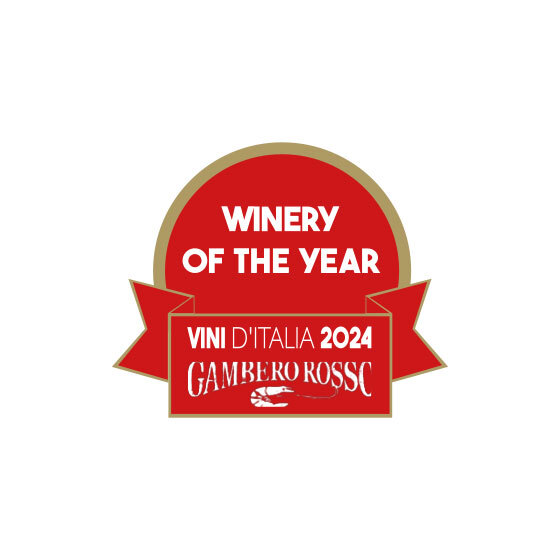Marche
Verdicchio
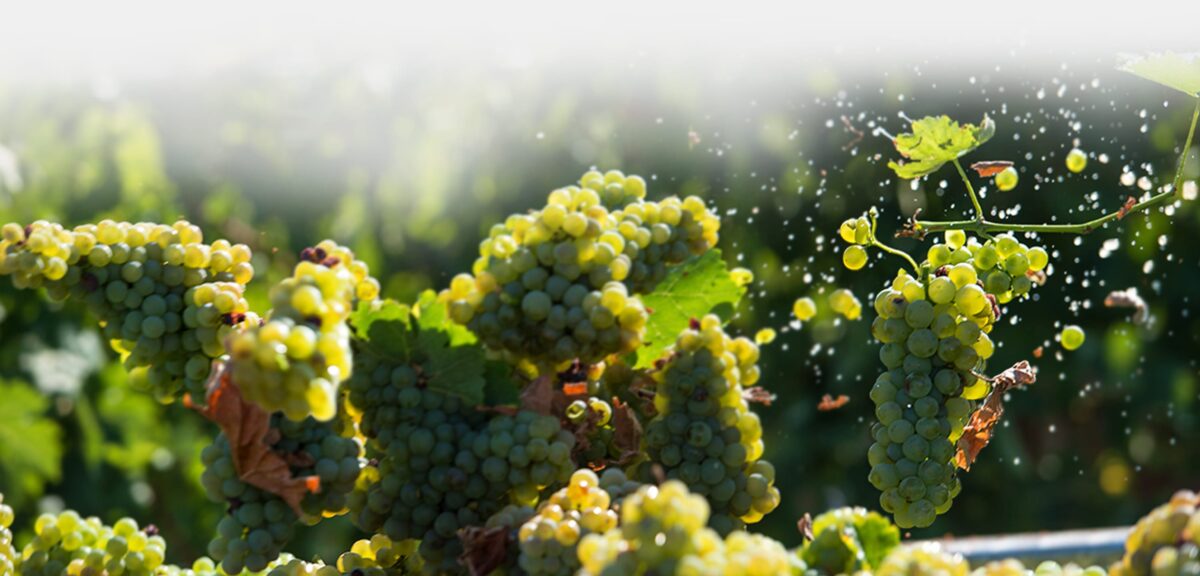
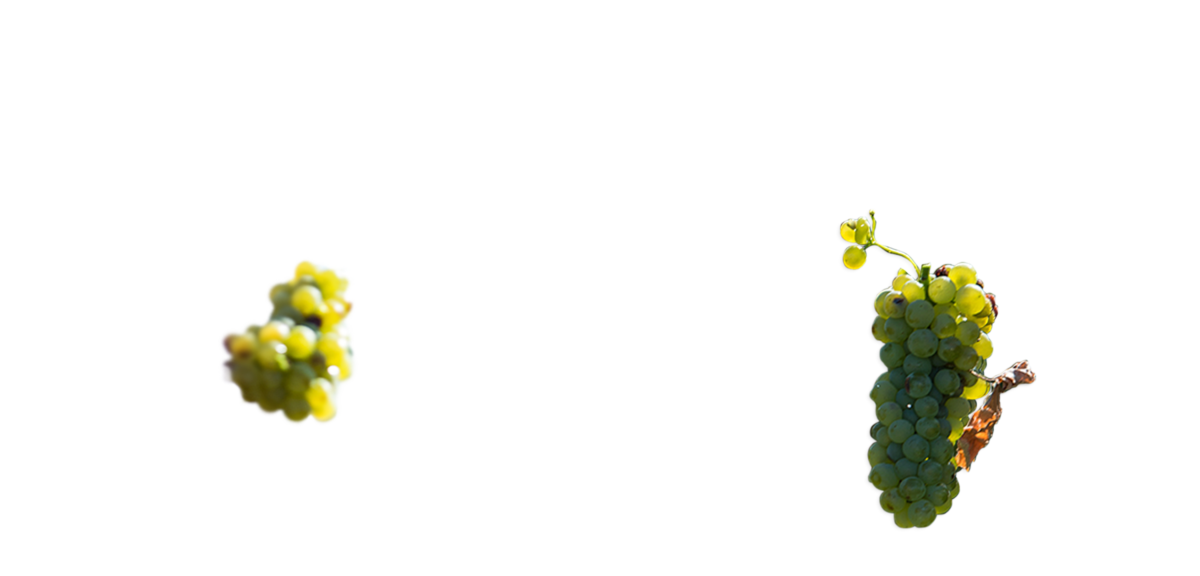
Made with native grape varieties, this white wine is characterized by aromas of broom, citrus fruits and aromatic herbs. Sapid and fresh, it reveals a trademark hint of almond on the finish.
This indigenous grape grows in Le Marche, where it manages to develop its distinctive features thanks to a unique climate and environment. Verdicchio is known for its ability to age particularly well over time. Reserves and single-vineyard wines can age for more than 10 years, acquiring considerable complexity.
We are in the heart of Verdicchio country on the left bank of the Esino river. Over the years, Umani Ronchi has put together 21.5 hectares under vine by acquiring and amalgamating the holdings of many small growers. Back in the Seventies, Massimo Bernetti realised how much potential what was to become one of Castelli di Jesi’s grand crus had for high quality and significant production levels.
In the Eighties, Le Busche was the birthplace of Casal di Serra, one of the first modern-style Verdicchios and a wine it still makes today. The vineyard, or rather its four hectares of jealously guarded old vines, is also the home of Vecchie Vigne. The old farmhouse you can see through the elms, mulberry trees, walnut trees and fig trees has been fitted with a tasting room that makes it the perfect tasting venue for a wine tourism journey.
Umani Ronchi has owned this plot at Serra dei Conti since the early Seventies and the entire vine stock was replanted starting in the early Nineties
Grapes from this 28-hectare vineyard go into the blends for some of the cellar’s finest whites, giving the wines their signature structure and complexity.
Since 2012, the San Sebastiano vineyard has been managed in compliance with organic farming protocols.
The entire holding focuses on the three sides of a small hill. Its slopes are covered with rows of vines and on top is Villa Bianchi, the recently restructured farmhouse belonging to the Bianchi-Bernetti family. Villa Bianchi is set aside for hospitality and its modern, fully equipped tasting room is a favourite stop for wine tourists. The vineyard extends over ten hectares and was planted in the first half of the Seventies before being replanted from 1989 onwards using innovative vineyard management techniques.
Villa Bianchi was also responsible for the first vintage of Plenio, one of the finest Verdicchio selections and the result of a bold, distinctly unfashionable decision for the time to plant at a density of 3,700 vines per hectare. Today, Plenio is produced at Cupramontana. Another of the excellent bottles from Villa Bianchi is Maximo, a wine from botrytised Sauvignon Blanc grapes that came into being almost by accident. Maximo is sourced from a two-hectare vineyard originally planted to less well-regarded red-skinned varieties which were regrafted with Sauvignon Blanc. The experiment was very successful and the rows were replanted to the same variety using modern vineyard management techniques. Here, the nature of the terrain with its gravelly patches, the north-facing aspect and site climate, which is dry throughout September and into October, cold and damp from mid October on, all encourage the noble rot that enables us to obtain this wine.
In the Seventies, the vine stock was 85% verdicchio with 15% malvasia and trebbiano. Today, Monte Schiavo has ten hectares of verdicchio and 4.5 hectares of cabernet sauvignon and merlot, two international red grapes that are very much at home in the warm site climate and on soil that is particularly well-suited to growing these varieties.
Monte Schiavo is one of the youngest Umani Ronchi vineyards, having been completely replanted.
One of the finest spots there is for making Verdicchio, Torre was acquired by the Bianchi Bernetti family in 2001 to enhance the winery’s production potential for the variety.
This plot of barely nine hectares is located in the municipality of Cupramontana on the right bank of the Esino river.
The San Paolo di Jesi estate, stretching from the valley on the right of the river Esino to the coast, was first planted in the Seventies and was acquired by the Bianchi Bernetti family in the early Nineties. Some 60% of the area under vine has been replanted but a number of small plots have been maintained on account of their truly exciting quality potential.
A vineyard situated in one of Montecarotto’s best crus, here we chose to use the double arched cane training system and increase planting density by about 35% compared to the vineyards of the 1970s, all in a particularly fertile and fresh soil.
VIA Vigne can be found in Maiolati Spontini, along the left bank of the Esino river. It’s an area rich in vineyards, such that it’s bordered to the north by the Strada Provinciale dei Castelli and to the west by the road known simply as “Vigne”. It’s an area particularly well suited to wine-growing, thanks to its green surroundings and the makeup of the land, which ensures, even in the hottest and driest of years, grapes with excellent acidity and freshness. Purchased in 2015, the vineyard was transformed from the Sylvoz training system into double Guyot, so as to naturally contain yields while increasing quality.
Characteristics
Cultivar: Verdicchio 19,5 hectares, Chardonnay 1 hectare
Soil type: very deep, medium-textured, clayey
Exposure: east-west
Altitude: 250-300 metres above sea level
Year planted: 1973 and 2015
Planting pattern: 2.6-3 metres between the rows; 1-2 metres between the vines
Density: 1,666-3,846 plants per hectare
Training form: single Guyot, double-arched cane
Production: 70-80 quintals per hectare
Cultivar: Native verdicchio 26.5 hectares, chardonnay 1.5 hectares
Soil type: Deep, medium-textured, clay and silt, calcareous
Exposure: South-west
Altitude: 200/250 meters above sea level
Year planted: 1993 and 2015
Planting pattern: 2.6-3 metres between the rows; 0.9-1.2 meters between the vines
Density: 2,777-4,273 plants per hectare
Training form: Single Guyot
Production: 100-110 quintals per hectare
Cultivar: Verdicchio 7.5 hectares, sauvignon blanc 2.5 hectares
Soil type: Moderately deep, medium-textured, clay and silt, calcareous with alluvial pebbles. Alluvial terraces.
Exposure: South-east/north
Altitude: 100 -150 metres above sea level
Year planted: 1993 and 2004
Planting pattern: 2.6-3 metres between the rows; 0.9-2 metres between the vines
Density: 2,767-4,273 plants per hectare
Training form: Single Guyot
Production: 30-120 quintals per hectare
Cultivar: Native verdicchio 10 hectares, sauvignon blanc 2.5 hectares, merlot 1.5 hectares
Soil type: Moderately deep, medium-textured, clayey, calcareous with alluvial pebbles. Alluvial terraces.
Exposure: South
Altitude: 100-150 metres above sea level
Year planted: 1998 and 2003
Planting pattern: 2.6 metres between the rows; 0.9-1 metres between the vines
Density: 3,846-4,273 plants per hectare
Training form: Single Guyot for verdicchio, cordon-trained and spur-pruned for red varieties
Production: 50-60 quintals per hectare for red varieties; 90-100 quintals per hectare for verdicchio
Cultivar: Verdicchio
Soil type: Very deep, medium-textured, clayey
Exposure: East
Altitude: 250-350 meters above sea level
Year planted: 1993
Planting pattern: 3 metres between the rows; from 1.4 meters between the vines
Density: 2,380 plants per hectare
Training form: Single Guyot
Production: 80-90 quintals per hectare
Cultivar: Verdicchio 13 hectares, Sauvignon Blanc 1 hectare
Soil type: very deep, medium-textured, clayey
Exposure: East
Altitude: 200-250 metres above sea level
Year planted: 1974 and 2006
Planting pattern: 2.6-3 metres between the rows; 1-2 metres between the vines
Density: 1,666-3,846 plants per hectare
Training form: single Guyot
Production: 60-110 quintals per hectare
Cultivar: Verdicchio (5.6 ha)
Soil type: very deep, clayey loam
Exposure: North-east/east
Altitude: 250-300 m. above sea level
Year planted: 2019
Planting pattern: 2.8 meters between rows; 1.4 meters between vines
Density: 2551 vines / ha
Training form: double arched cane
Production: 9,000-10,000 liters / ha
Cultivar: Verdicchio (9 ha)
Soil type: very deep, clayey loam
Exposure: North-east/east
Altitude: 200 m. above sea level
Year planted: 1993
Planting pattern: 3 meters between rows; 1.4 meters between vines
Density: 2380 vines / ha
Training form: double guyot
Production: 9,000-10,000 liters / ha
Conero
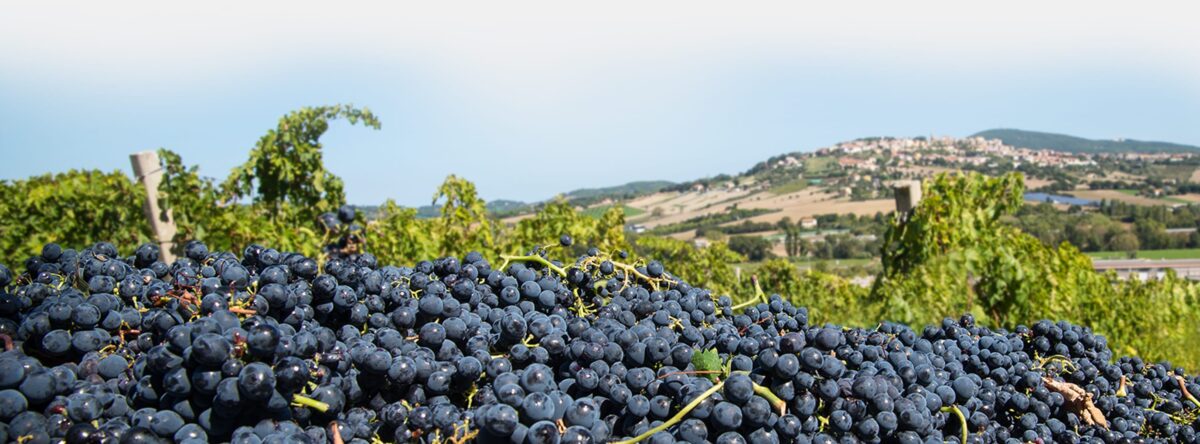
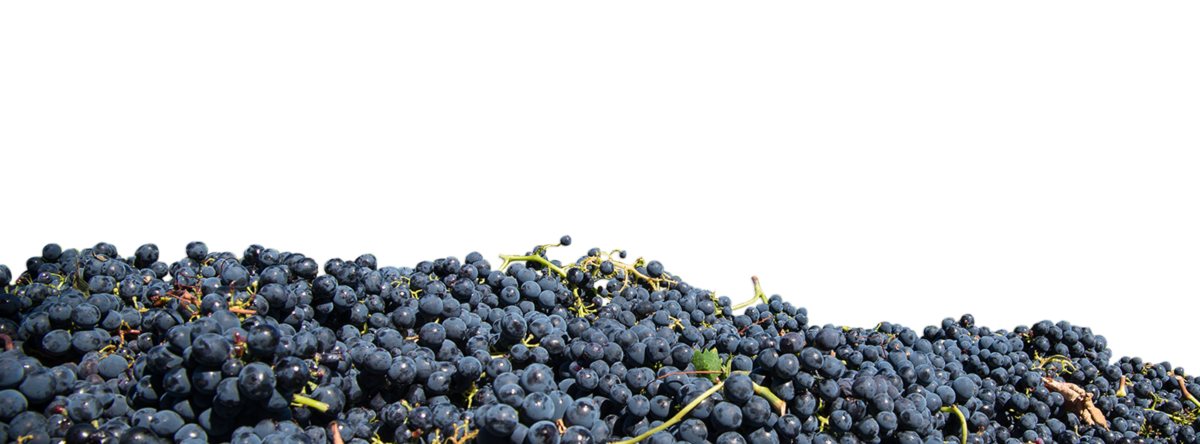
Made with Montepulciano grapes, this red wine offers up hints of spices, small berries and balsamic nuances. In the mouth it stands out for its pervasive tannins and excellent length.
Situated on a peak overlooking the sea, Mount Conero protects the surrounding hills from cold northeastern winds. The result is a unique “terroir” where the grapes develop balanced acidity, sugars and phenolic compounds. Conero represents the northernmost area where Montepulciano can be cultivated, giving rise to wines of extreme elegance.
An estate that covers a total of 35 hectares, San Lorenzo is one of the vineyards the Bianchi-Bernettis have owned for longest. It was here in the mid Sixties that the family began planting plots for the production of Rosso Conero. It was here, too, that the first small plot of Cabernet Sauvignon was planted in the mid Eighties.
From the mid Nineties, the estate’s constant experiments with more modern, rational vine cultivation techniques led to the replanting of most of the old vines at much higher densities using cordon training and spur pruning. In the meantime, this superb vineyard produced wines like Cumaro, San Lorenzo and Pelago. The vineyard’s best growing site was replanted in the early Noughties with vines that would, along with a section of an adjacent older vineyard, become the heart of a project the created Campo San Giorgio.
In the mid Seventies, the Saline holding was partially planted to vine for the production of Rosso Conero. The site was so good that subsequently the entire estate was converted to grape-growing and today is one of the most important plantings in the entire growing zone for Rosso Conero.
A number of different varieties are grown at Saline as well as montepulciano and sangiovese.
The Piantate Lunghe holding extends over just 9 hectares. It was acquired by Umani Ronchi in 1998 primarily because the winery’s technical staff had identified the area as one with outstanding wine potential. The soil type, superb location and a special, warm microclimate make Piantate Lunghe an ideal place to ripen Montepulciano grapes.
Characteristics
Cultivar: Montepulciano 30 hectares, sangiovese 1 hectare, cabernet sauvignon 2 hectares, merlot 2 hectares
Soil type: Very deep, medium-textured, clay and silt, very calcareous
Exposure: South-east; South-west
Altitude: 100-150 metres above sea level
Year planted: 1989 and 2012
Planting pattern: 2.1-3 metres between the rows; 0.6-1.5 metres between the vines
Density: 2,976-7,936 plants per hectare
Training form: Cordon-trained and spur-pruned, Guyot
Production: 50-90 quintals per hectare
Cultivar: Montepulciano 10 hectares, cabernet sauvignon 3 hectares, merlot 3 hectares
Soil type: Very deep, clay and silt, calcareous
Exposure: East-west
Altitude: 100-150 metres above sea level
Year planted: 1974 and 2001
Planting pattern: 2.6-3 metres between the rows; 1-1.5 metres between the vines
Density: 2,222-3,846 plants per hectare
Training form: Cordon-trained and spur-pruned, old vines double Guyot
Production: 80-90 quintals per hectare
Cultivar: Montepulciano 8 hectares, Sangiovese 1 hectare
Soil type: Deep, medium-textured, clayey, sandy in parts, calcareous, fairly pebbly
Exposure: South/south-west
Altitude: 150-200 metres above sea level
Year planted: 1998 and 1999
Planting pattern: 2.2 metres between the rows; from 0.8 meters between the vines
Density: 5,681 plants per hectare
Training form: Cordon-trained and spur-pruned
Production: 60-90 quintals per hectare

Subscribe to the newsletter
We invite you to subscribe to our newsletter to receive all the news from the Umani Ronchi world.

